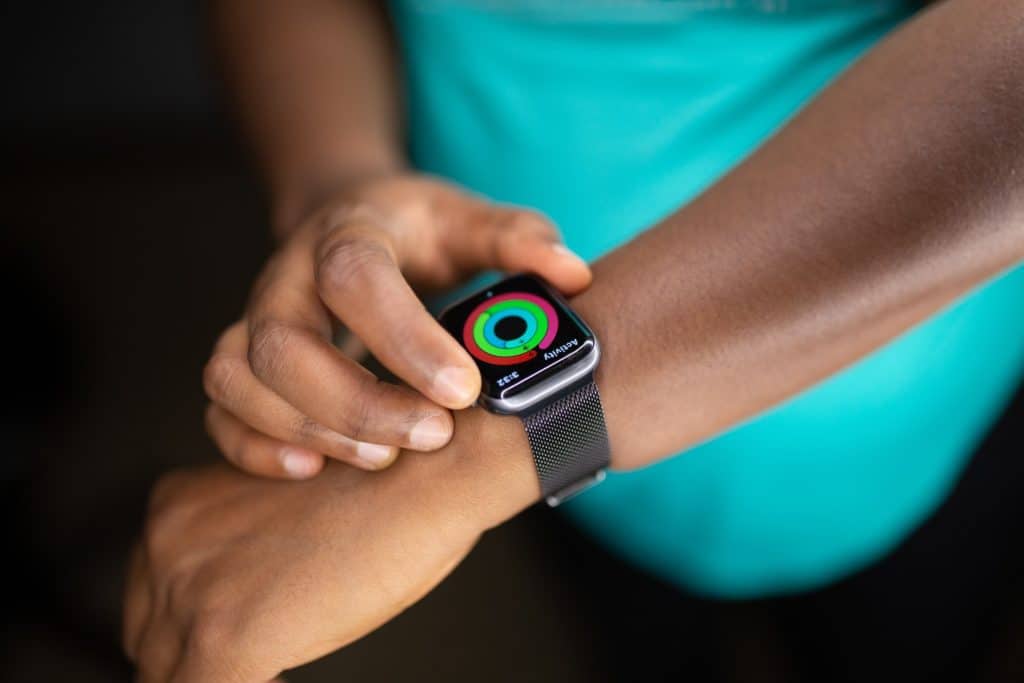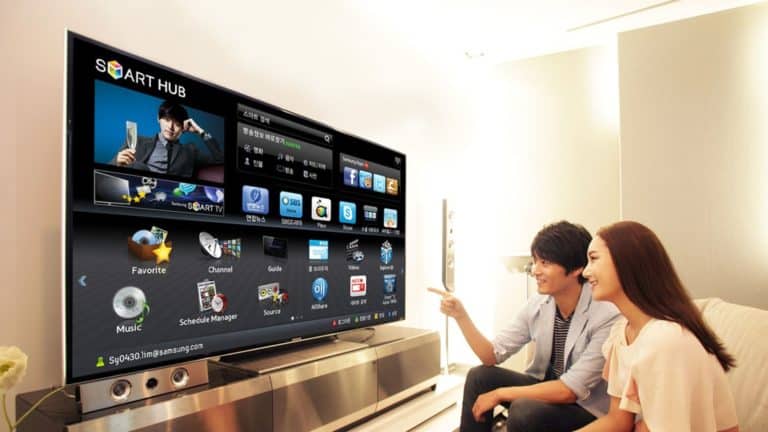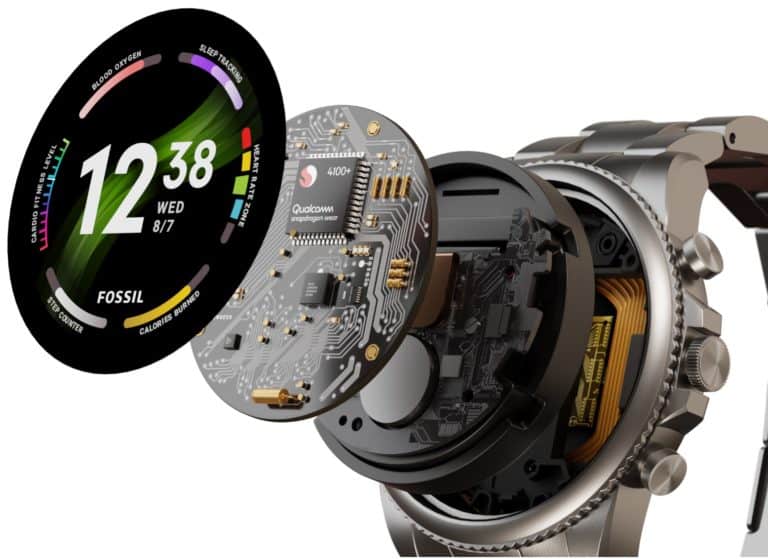On a long enough timetable, it seems that a smartwatch battery will run out. We all have had a watch fail to charge overnight just because it was removed from the charger. In this article, we will attempt to understand what is a good smartwatch battery life.
What do we have in the market?
Trendies understand that recharging isn’t always possible on lengthy flights, whether because you’re too busy, there’s no power nearby, or you don’t have the proper accessories. You may also forget to charge wherever you are, which is easy with a gadget that is practically an extension of your arm.
Because of these concerns, the battery life associated with specific watches is compromised. Samsung boasts that the Galaxy Watch 4 has a battery life of 40 hours, but real-world demands like GPS and activity tracking eat into that number, so you’ll most likely have to charge it daily.
Apple Watches are much worse, with a battery life of just 18 hours. Buyers may have to charge twice a day if they monitor their sleep or run large distances.
The more smooth and integrated smartwatches grow, the more essential battery life becomes. Devices are heading toward a larger number of health sensors, for example, but this might be counterproductive if it lowers the amount of time you can wear a device on your wrist.
People are increasingly utilizing Smart goods due to the growth of smartwatches. Therefore, the spread of smartwatches is becoming more fortunate. Although smartwatches have the capability of many classic timepieces, they also have a major flaw: smartwatch battery life.
Smartwatch Battery Life Problem
The battery life capacities of the smartwatches on the market vary, with the length being 5-7 days and the hours being short. Even for up to 5-7 days, it is hard to satisfy the demands of typical consumers with smartwatches. After all, smartwatches began as timepieces.
Lithium-ion polymer batteries have steadily replaced traditional liquid lithium batteries since 2013. There has been a dramatic increase in the energy density of cellphones since then.
Many smartphone manufacturers started to install internal batteries in 2013-2014, and the working voltage of smartphone batteries increased from 3.7V to 3.8V. Smartphone battery-specific capacity has once again achieved a high.
Nonetheless, the smartphone’s battery life has also seen a stay. Lithium batteries have become somewhat incapable in the face of today’s smartphones’ excessive power usage.
There is no doubt that smartphone producers are always searching for new ways to prolong battery life and increase battery capacity, along with new battery advancements to replace fuel cells and bio-batteries.
Smartphone consumers have become used to “one day a charge” or even “more than one-day” thanks to the nurture of savvy manufacturers. On the other hand, Smartwatches cannot regard in the same manner.
Who wants to charge their smartwatch with an external power source daily if they own one? Smartwatch producers must overcome the challenge of making customers easier to use.
Smartwatch Function
The current market capacity of smartwatch batteries varies from 300mAh to 500mAh. The size of the watch’s battery might vary significantly depending on how big and complex the watch is.
We can do it for a long period and truly utilize it, but we get the impression that there is no electricity! Let us have a look at the power usage of this Smartwatch feature! The 500mAh Smartwatch battery computes the following:
Sports Step
When no other features are open, the step-by-step function of the smartwatch’s primary sports feature is always on, from dawn to night to sleep, and it may use up to 30% of the smartwatch’s power during typical activity (based on 13000 steps).
Connect Mobile Phone Bluetooth
Smartwatches may often communicate with mobile devices over Bluetooth before utilizing an app to transmit messages.
If there are few messages pushed, the Bluetooth call function may see that the basic power consumption is extremely minimal, but if you are a chat fanatic, there is a lot of news all day long. The smartwatch’s power usage progressively increases when Bluetooth links to the phone.
Heart Rate Monitoring
You can overlook the power usage if you measure the heart rate on occasion. Some Smartwatches contain real-time monitoring of the wearer’s heart rate, which may drain the battery in a matter of hours, since the heart rate is reliant on light, constant light, and feedback, resulting in a large amount of power consumption.
GPS Positioning
We can see that GPS location Smartwatch battery is deadly, even on large-capacity mobile phones, much alone little watches. If the watch does not switch off the GPS after one hour, you must charge it. As a result, the watch’s GPS intelligence is employed as an auxiliary device and cannot constantly be kept open.
Elevation Compass
These are constantly open and eager for power. There is no question that heart rate real-time monitoring and GPS are the same due to the ongoing measurement and gathering of data.
Why Don’t Smartwatches Have Longer Battery Life?
Several factors have converged to make smartwatch battery life challenging, the most significant of which is ergonomics. On a technological level, nothing prevents corporations from strapping massive batteries to your wrist.
Such gadgets, however, may rapidly grow too heavy or unpleasant to wear all day, much alone tossing and turning in bed or lifting weights at the gym. Wearable developers are continuously attempting to strike a compromise between smartwatch battery life and other considerations.
Software support is one of them. What makes smartwatches appealing is their ability to move from Spotify to navigation or Smart home app in a matter of seconds. That necessitates a powerful CPU, along with a high-quality display and a user-friendly interface.
Because the Apple Watch is a polished jack-of-all-trades, it has horrible battery life. While suppliers like Coros and Garmin produce fitness-oriented devices that can afford to compromise features like display quality and strong on-device software.
Because of the problem, businesses have devised ingenious ways to cut electricity use. Mobvoi introduced a secondary low-power display to its TicWatch Pro series, while Fossil decided to provide unique battery modes to Wear OS, allowing users to disable specific sensors. When you drop your wrist, newer smartphones with “always-on” screens often reduce brightness and refresh rates.
Less practical concerns, such as aesthetics and profit margins, are also at stake. Fitbit could grow their batteries if their gadgets were as huge as Garmin’s, but they choose smaller form factors instead — and occasionally, this is expressly to seem as elegant as possible.
It is because they often promote smaller watches and trackers to women, replete with stereotypically “feminine” bands and hues. Garmin produces items like the Lily because fashion frequently outweighs practicality.
Part prices cause margin pressure. It’s not just about the batteries; since boosting lifespan often necessitates updating semiconductors, displays, circuitry, and/or housing, the costs may quickly mount.
Both the corporation and its customers lose out as a result of these expenses being absorbed or passed on to them. As it is, high-end smartwatches may be costly accessories for much more expensive smartphones.
Frequently Asked Questions (FAQs):
Why Does My Smartwatch Battery Drain So Quickly?
Several applications on Android Wear use a lot of battery power. Smart users notice an immediate change in battery condition when third-party applications are loaded on Android Wear. In this instance, battery-draining applications should be removed.
Can The Batteries In Smart Watches Be Replaced?
In certain circumstances, your Fossil watch has notified you that your battery is reaching the end of its life. A CR2430 battery could use, and you can get these at many places that sell batteries.
When Is It Time To Charge Your Smart Watch?
If you want to get the most out of your Galaxy watch, make sure it’s properly charged. Charge the battery before using it for the first time or if you have not used it in a long. To get the most out of your battery, connect to a Wi-Fi network, utilize applications, and stay in contact with others.
How Long Do Smart Watch Batteries Last?
Most smartwatch batteries last between 1 and 2 days on average when linked to a smartphone. When using the smartwatch daily, you should enable it to sync or push alerts like weather, mail, and social networking updates to save battery life.
Conclusion
GPS and tracking watch users should not anticipate more than seven to eight hours of battery life, even if they charge their watches for an average of six hours and still have space left in their batteries.





